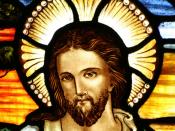INTRODUCTION
Momentous changes occurred both in the Church and in the political structure of the Roman Empire during the forth century. Christianity, once a persecuted minority faith, became the religion of the empire by the end of the century by Constantine's conversion in 312 CE. The relationship between the Church and the state was changed to reunite the once separated provinces to favour Christianity. Constantine achieved the unification of the East and West of the Roman Empire by 325 CE but his sincerity to the Christian Church is still doubt.
FOUR MODELS OF CHURCH/STATE RELATIONS
There are four classifications of Church/state relations, these are separation, church domination, state domination and collaboration. Separation can be defined where there is minimal interplay between Church and State authorities, with each operating in their own separate spheres, the sacred and the secular.
Church Domination is when religious authorities and concepts dominate the life and culture of the country to the exclusion of secular governments.
In its most extreme form, it is known as theocracy, in which all laws and functions of the State are determined by absolute religious beliefs.
State Domination is when the state controls all aspects of life and denies the Church any role, even to the point of persecuting it and making its existence illegal. In extreme cases, believers have had their property confiscated, been denied the right to worship and have been executed for their beliefs
Collaboration can be defined as that at times there has been a mutual recognition and respect for the respective roles of Church and State in a given country or empire. In these circumstances, both institutions work together for a common purpose. This relationship is characterised by tolerance and acceptance of the role of both agencies to contribute to the common good of society...

